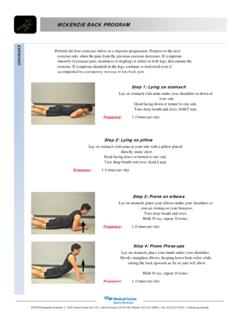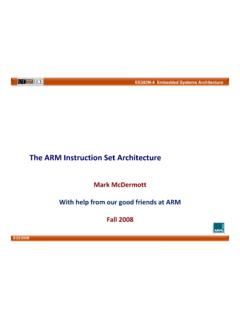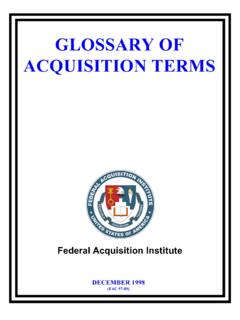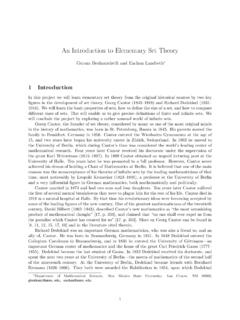Transcription of Courtney Pine: Back in the Day ‘Lady Day and
1 Courtney Pine: back in the Day Lady Day and (John Coltrane), Inner State (of Mind)' and Love and Affection'. (for component 3: Appraising). Background information and performance circumstances Courtney Pine is one of the most successful British jazz musicians of the modern era. He has achieved more commercial success than most of his contemporary musicians, partly through his use of a variety of modern popular styles in fusion with American modern jazz elements. His jazz influences have included American greats such as Miles Davis, John Coltrane and Sonny Rollins.
2 The song in this selection titled Lady Day and (John Coltrane)' pays tribute to two of the greatest twentieth-century jazz performers the female vocalist Billie Holiday and the tenor saxophonist Coltrane. Pine's parents are from the Caribbean island of Jamaica and that country's reggae music has had a profound influence on his work. More recently hip-hop styles, themselves based on black American popular music, began to feature in his recordings and in the music played by his touring bands. back in the Day includes standard features of hip-hop, including rap and turntable performers.
3 As well as being a multi-instrumentalist (tenor and soprano saxophones, flute and bass clarinet), he has also worked as a DJ, so he is well versed in turntable and other techniques. He produced and mixed the album himself. Though much modern jazz is original, it has been a common feature of the music to use covers of well- known popular songs of the period. Miles Davis, for instance used material by Michael Jackson. Pine does the same for a number of pieces on this album, including the Joan Armatrading song Love and Affection'. Lady Day and (John Coltrane)'.
4 The music bears little relation to the musicians of the title (Billie Holiday and John Coltrane). Holiday (nicknamed Lady Day) was a singer in the big band swing jazz era. John Coltrane was a tenor saxophonist in the era of the modern jazz combo. This music, on the other hand, is more closely connected with blues and soul. After the eight-bar intro, the music has the sound of a 12-bar blues but with eight bars of fast tempo tonic C before moving to the subdominant F. The chord sequences at the end of the verse become more complex and jazz influenced.
5 Note: These set works guides are Pearson's interpretation of the set works and every effort has been made to ensure these are appropriate for use in the classroom. There may be other interpretations which are also valid and any such differences would not be considered errors, or require any updates to the guides. Structure Bars 1 4 Turntable effects lead to a fast tempo rock rhythm featuring C7( 9) chords (see notes on Intro Inner State of Mind'). There is a melisma (several notes to a syllable) featuring a blue note flattened fifth. (bar 3). Bars 5 36 Eight bars on the extended tonic chord C7( 9) for vocalist and rhythm section.
6 The First Verse keyboard is set to sound like a Hammond organ, used in much early blues and soul music. The sound features a vibrato effect. The singer is the blues and soul specialist Lynden David Hall. There are short improvised saxophone links, or fills, between the phrases. The harmony then moves to the subdominant as in a standard blues. It's again an extended chord, F7( 9). Again the flat third of the chord has the effect of a blue note. After four bars the harmony returns to the tonic as in a blues. The extended turnaround from bar 21 is much more complex, with faster harmonic rhythm (rate of chord change).
7 There's a conventional dominant (Gm7) and subdominant (Fm7). Then it becomes more interesting with a thirteenth chord on the flat seventh (B ). In bar 25 the harmonic rhythm becomes faster still with a chromatic descent through a series of seventh chords, before returning again to the B thirteenth chord, and via a bar with no harmony (stop time effect), to the tonic chord at the beginning of the first time bars (eight bars on the tonic). Bars 5 44 The second verse has the same music (as in standard strophic form). At the second Second time bar there's additional backing vocal harmony, mainly in fifths.
8 Verse The saxophone phrase includes a slow lip vibrato, vibrato controlled by the lips rather than the breath. Bars 45 76 An improvised sax solo includes pitch bend technique as Pine gradually slides from D up a semitone to E . The harmony is altered to form a new four-chord sequence, including E ninth chords (E 7 with an F major ninth above the root) and G+7 chords (a G7 chord with augmented fifth). The augmented fifth D is notated as its enharmonic equivalent E in the score. The saxophone moves into a very high tessitura (pitch range) with more glissandos, chromatic scales and short slides up to and down from the note.
9 The sax solo ends with a long, rapid descending chromatic scale (bar 75). Dal Segno The music then goes back to the sign at bar 5 and the first verse is repeated. At the end to Coda of bar 26 the music moves to the coda. The harmony of the coda begins on B with an extended chord of B 13. The whole harmony then shifts up a semitone to B11 before returning to B . Through this section the singer improvises and the sax provides a counterpoint, often at a much lower tessitura than in the long solo earlier. The harmony changes to an ostinato three-chord sequence of subdominant (F), dominant (G) and tonic (C), all with ninths from bar 89.
10 The sequence repeats until bar 118. Note: These set works guides are Pearson's interpretation of the set works and every effort has been made to ensure these are appropriate for use in the classroom. There may be other interpretations which are also valid and any such differences would not be considered errors, or require any updates to the guides. At bar 119 the drum rhythm stops and there's a G+ chord (G augmented) sustained over four bars. The E is the enharmonic equivalent of the augmented fifth (D ). This dominant chord resolves on the tonic with six bars of C7( 9).















![[Ch 6] Set Theory 1. Basic Concepts and Definitions](/cache/preview/c/e/2/4/1/3/7/e/thumb-ce24137e0a382875a0c9905ad219dbfc.jpg)


